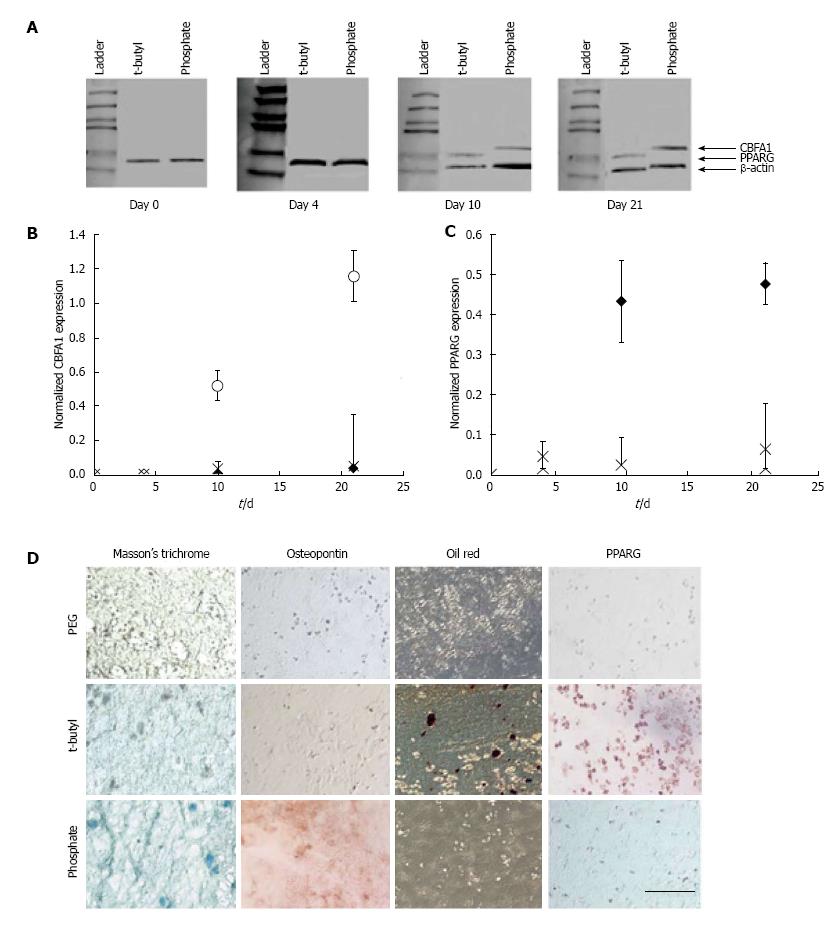Copyright
©The Author(s) 2015.
World J Stem Cells. Jan 26, 2015; 7(1): 37-50
Published online Jan 26, 2015. doi: 10.4252/wjsc.v7.i1.37
Published online Jan 26, 2015. doi: 10.4252/wjsc.v7.i1.37
Figure 4 Effect of surface chemical functional groups on the differentiation of stem cells.
Encapsulation of human mesenchymal stem cells (hMSCs) in phosphate and t-butyl functionalised polyethylene glycol hydrogels affected the CBFA1 and PPARG expression. A: CBFA1, PPARG, and β-actin expression of hMSCs encapsulated in control, t-butyl, and phosphate-functionalised PEG hydrogels was performed. Immunoblots were quantified with ImageJ software and CBFA1 (B) and PPARG (C) expression levels over the 21-d culture period were normalised to β-actin expression; D: Differentiation was confirmed using Masson’s trichrome stains collagen blue (left column) and Oil Red stains intracellular lipid deposits red (third column). (bar = 100 μm). Taken with permission from Benoit DS, Schwartz MP, Durney AR, Anseth KS. Small functional groups for controlled differentiation of hydrogel-encapsulated human mesenchymal stem cells. Nat Mater 2008; 7: 816-823.
- Citation: Griffin MF, Butler PE, Seifalian AM, Kalaskar DM. Control of stem cell fate by engineering their micro and nanoenvironment. World J Stem Cells 2015; 7(1): 37-50
- URL: https://www.wjgnet.com/1948-0210/full/v7/i1/37.htm
- DOI: https://dx.doi.org/10.4252/wjsc.v7.i1.37









